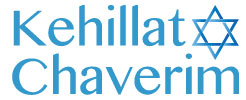Vayakhel-Pekudei – 5783 – Becoming God’s Hosts
After I signed up to give the D’var today, I looked at the narrative in Vayakhel. “Construction of the Tabernacle.” Gather the goats’ hair, the dolphin skins (dolphin skins in the desert? Whatever.), etc. “They made 50 loops on the edge of the outermost cloth . . .” Ideas for a D’var? Not yet. Then I remembered that this was a double parashah, so I went to the P’Kudei. The Tabernacle – Part 2. “They made bells of pure gold and attached the bells between the pomegranates – a bell and a pomegranate, a bell and a pomegranate . . .” Good grief!
The entire narrative of creation took 34 verses. The construction of the tabernacle comprises around 500 verses. Clearly, there was something I was missing. It seems that for G-d to create a home for humankind was much simpler than for humans to create a home for G-d.
I began to get a clue as to what my D’var could focus on when I read that the Book of Genesis is about G-d’s creation of humankind and the Book of Exodus is about the creation of Jews as a people. The narrative that begins with us as slaves now comes to its conclusion with the description of our building a tabernacle as a major joint effort that requires the input of everyone. Families that likely had barely known one another came together in a common purpose. Cooperation and teamwork are definitely not traits of slaves, but rather of free people.
Remember that the Israelites were divided into 12 tribes or clans. Moses faced a problem not totally unlike many cultures face today – that of a multi-ethnic society in which factors that divide are sometimes more pronounced than factors that unify. And further, these people – the Israelites – love to squawk. (Things haven’t changed much!) Even soon after Revelation, they complained about the lack of food, water, a nice cool shower – everything! They’re cranks! But even cranks can be inspired.
Before this activity of tabernacle-building, we see G-d acting on behalf of the people – freeing them from bondage, dividing the sea, and entrapping the Egyptians. Now, it was time for the Israelites to do things for themselves. And note that during this entire construction period – a significant portion of the Book of Exodus – there was no squawking. This is behavior we haven’t seen before. It is almost as though the Israelites had been transformed. A nation has been created out of a sense of shared responsibility. And that shared responsibility transcended perceived differences between clans and families.
The Torah is thus not only a book about individual responsibility and a code of ethics. It is a book about how we construct a society – a small one, like ours here in the Kehillah, or a much larger one, like our community and indeed, our country.
We read a few weeks ago in Teruma, that G-d told Moses to have the Israelites build a tabernacle so that G-d might dwell among them. But the ultimate meaning of the tabernacle isn’t that G-d lives there. Did G-d really “need” a place so that G-d might dwell among G-d’s people? Most of us don’t really believe that.
No – the meaning of the tabernacle is that G-d is present wherever we subordinate our will to G-d’s will. Numerous times in the tabernacle’s construction, we read, “As the Lord had commanded Moses.” The tabernacle symbolized the place where G-d’s will was obeyed – where it reigned supreme. The tabernacle is where what we read in the Torah and are commanded to do, how to live, how to treat our fellow humans, is first learned, and given the opportunity to come to life. In following G-d’s commands and building the tabernacle, and in subordinating our perhaps natural inclinations and our will to the will of G-d, we become G-d’s partners in creation and in the unfolding history of humankind.
By constructing a tabernacle in the most exacting way, we have, in effect, also built a space in our hearts and in our minds; a space for G-d. In its construction, the Israelites were changed. Literally and figuratively, the people needed to first build the space that would enable G-d to fill it.
Judaism’s teachings are the ways we can begin to heal wounds brought about by humans, and the only way to create a world worthy of G-d’s presence. I like that, and I like the imagery of Gd’s presence in our kehillah.
Note that the Torah doesn’t say, “Have them build a tabernacle so that I can dwell there.” It says, “Have them build a tabernacle so that I may dwell among them. We’re here today – we come to shul today – not so that we can visit Gd. We’re here so that G-d can visit us.

